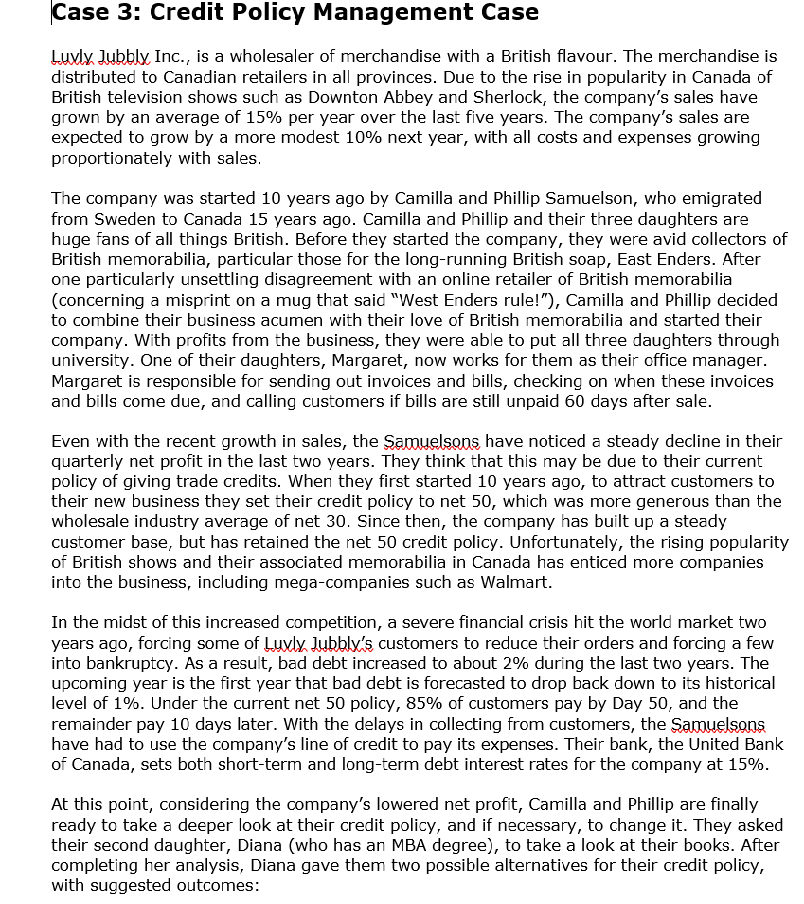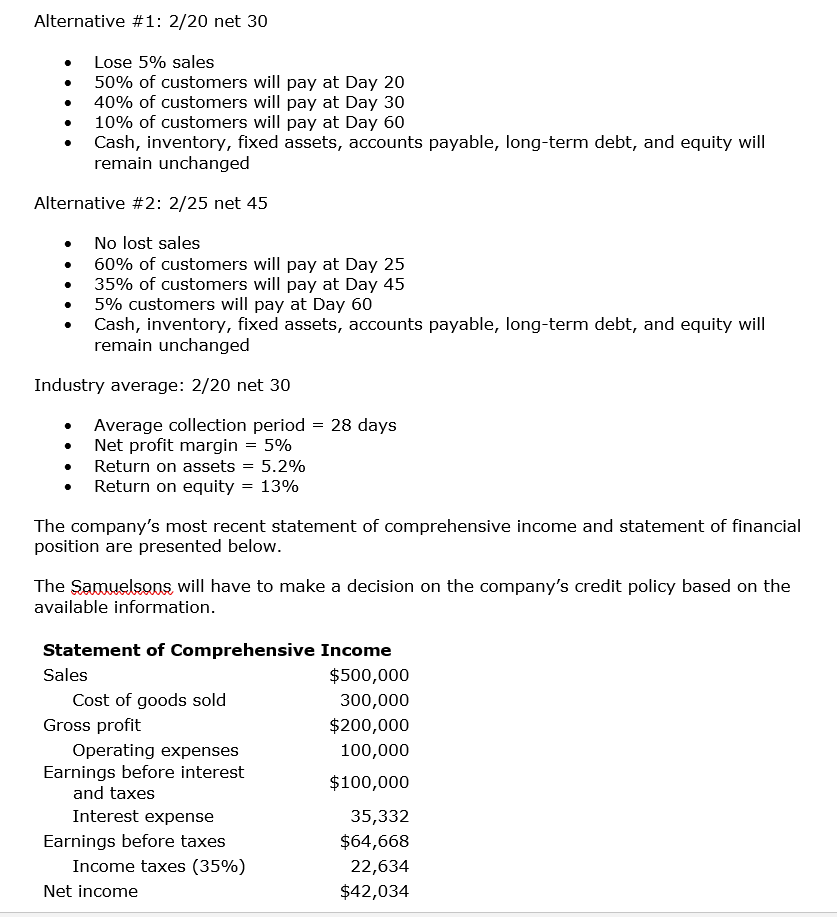Statement of Financial Position Cash 10,000 Accounts payable $15,000 Accounts receivable 70,548 Notes payable 35,548 Inventory 20,000 Current liabilities $50,548 Current assets $100,548 Long-term debt 200,000 Fixed assets 500,000 Equity $350,000 Total assets $600,548 Total liabilities & equity $600,548 Construct the Pro-forma Statement of Comprehensive Income and Statement of Financial Position based on the current credit policy and the two proposed credit policies. Calculate the average collection period, net profit margin, return on assets, and return on equity for both the current and the proposed policies. How does the company compare with the industry average in terms of its average collection period, profitability, and returns on assets and equity under the current and proposed policies? 4-Which credit policy should the Samuelsons choose? Provide reasons for your recommendation.
Reporting Cash Flows
Reporting of cash flows means a statement of cash flow which is a financial statement. A cash flow statement is prepared by gathering all the data regarding inflows and outflows of a company. The cash flow statement includes cash inflows and outflows from various activities such as operating, financing, and investment. Reporting this statement is important because it is the main financial statement of the company.
Balance Sheet
A balance sheet is an integral part of the set of financial statements of an organization that reports the assets, liabilities, equity (shareholding) capital, other short and long-term debts, along with other related items. A balance sheet is one of the most critical measures of the financial performance and position of the company, and as the name suggests, the statement must balance the assets against the liabilities and equity. The assets are what the company owns, and the liabilities represent what the company owes. Equity represents the amount invested in the business, either by the promoters of the company or by external shareholders. The total assets must match total liabilities plus equity.
Financial Statements
Financial statements are written records of an organization which provide a true and real picture of business activities. It shows the financial position and the operating performance of the company. It is prepared at the end of every financial cycle. It includes three main components that are balance sheet, income statement and cash flow statement.
Owner's Capital
Before we begin to understand what Owner’s capital is and what Equity financing is to an organization, it is important to understand some basic accounting terminologies. A double-entry bookkeeping system Normal account balances are those which are expected to have either a debit balance or a credit balance, depending on the nature of the account. An asset account will have a debit balance as normal balance because an asset is a debit account. Similarly, a liability account will have the normal balance as a credit balance because it is amount owed, representing a credit account. Equity is also said to have a credit balance as its normal balance. However, sometimes the normal balances may be reversed, often due to incorrect journal or posting entries or other accounting/ clerical errors.
|
||||||
|
Cash |
10,000 |
Accounts payable |
$15,000 |
|||
|
Accounts receivable |
70,548 |
Notes payable |
35,548 |
|||
|
Inventory |
20,000 |
Current liabilities |
$50,548 |
|||
|
Current assets |
$100,548 |
Long-term debt |
200,000 |
|||
|
Fixed assets |
500,000 |
Equity |
$350,000 |
|||
|
Total assets |
$600,548 |
|
$600,548 |
- Construct the Pro-forma Statement of Comprehensive Income and Statement of Financial Position based on the current credit policy and the two proposed credit policies.
- Calculate the average collection period, net profit margin, return on assets, and return on equity for both the current and the proposed policies.
- How does the company compare with the industry average in terms of its average collection period, profitability, and returns on assets and equity under the current and proposed policies?
4-Which credit policy should the Samuelsons choose? Provide reasons for your recommendation.


Trending now
This is a popular solution!
Step by step
Solved in 3 steps with 6 images








